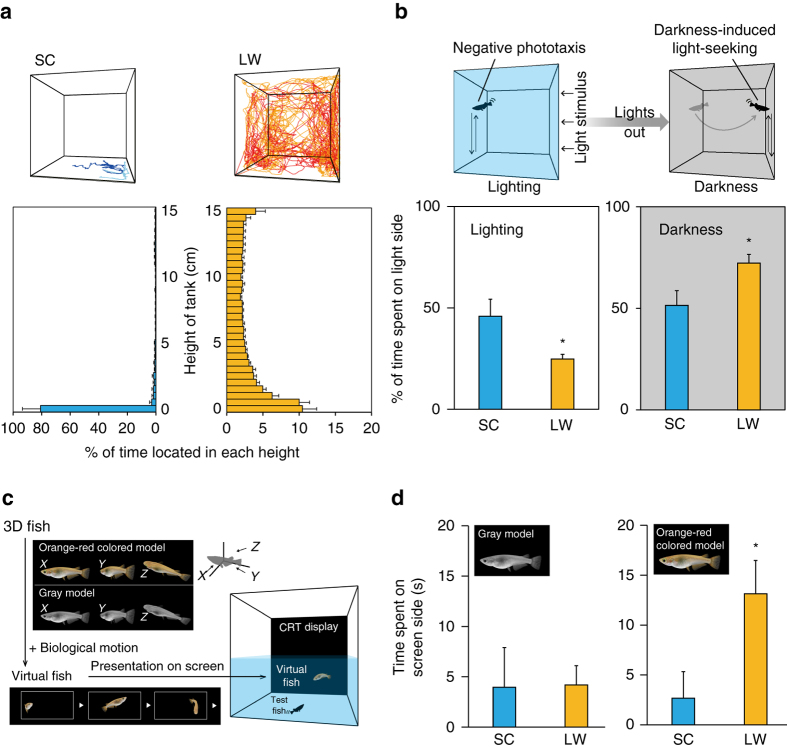Fig. 1.
Medaka undergo seasonal changes in behavior. a Top: Behavioral traces of two individuals under long day/warm temperature (LW) and short day/cool temperature (SC) conditions. Different colors denote traces for each individual. Bottom: Time spent at each height of the tank. b Top: Medaka (LW fish) exhibited negative phototaxis (left) and darkness-induced light-seeking behavior (right). Bottom: (left) LW fish exhibited negative phototaxis to a white light stimulus, whereas SC fish swam randomly (*P < 0.05, t-test; mean + SEM, n = 5–9). (right) When the light was turned off, LW fish immediately moved to the opposite side of the tank, whereas SC fish failed to exhibit this darkness-induced light-seeking behavior (*P < 0.05, t-test; mean + SEM, n = 5–9). c Three-dimensional computer graphics (3D-CG) medaka (see Supplementary Movie 1). d (left) When presented with a gray model fish on the screen, neither SC nor LW test fish showed a preference (P > 0.05, t-test; mean + SEM, n = 8–10). (right) By contrast, LW test fish spent more time on the screen side when presented with orange-red-colored model fish, whereas SC fish did not show a preference (*P < 0.05, t-test; mean + SEM, n = 10)

